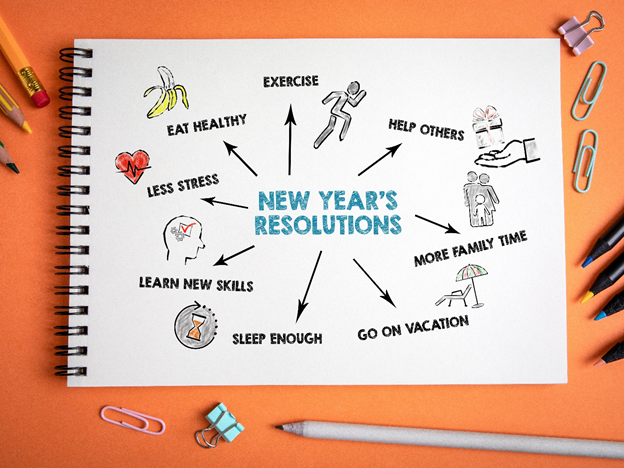
Want to include mindfulness into your New Year’s resolutions? Here’s how.
One great resolution for this up coming year would be to not let yourself get ensnared by the up and down cycle of attraction and aversion. This is very deceptive trap where we are drawn to anything that brings us pleasure and repulsed by anything that brings us pain. In a recent blog I wrote about how often times, the very things that initially bring us pleasure, end up causing us pain. Whether that’s a relationship gone sour, a food we once loved that now causes indigestion, or even a beloved appliance or device that no longer works properly.
We tend to see attraction and aversion in terms of good news or bad. But this limited view will turn your life into a roller coaster ride where one day you’re up and the next day you are down. And it can easily sabotage your chances for success in life also. As you will see in this blog, you simply can’t extricate good from bad or vice versa, and yet we do so at our own peril, constantly running in the direction of the good news and in the opposite direction of bad. First let me talk about just how odd this notion of good vs. bad can be.
About two months ago I got a speeding ticket. I haven’t gotten a speeding ticket for a long time and for some reason this one really bummed me out. The ticket didn’t mention any fees, it just said I could plead guilty or not guilty and a judge would then decide what the fine would be. I really didn’t like not knowing what my fine would be, so I decided to plead “not guilty.” A couple of weeks later – I got a notice in the mail that said my charge had been reduced to a parking violation and I could plead guilty to the lesser charge. Now, I was delighted so I returned the form with a guilty plea. A few weeks after that, I get yet another notice that says the fee for a parking violation was almost $200. So now this bit of bad news makes me angry.
But you can easily see how this good news/bad news scenario is kind of odd. If I don’t get the bad news first, the good news wouldn’t be good. And of course when I get the second dose of bad news, that wouldn’t have been bad if I hadn’t had the interceding piece of good news.
There’s a mindfulness story about a farmer whose horse runs away. His neighbors all say oh you poor guy, what bad news. But the farmer, refuses to go along with labeling the event either good or bad and instead says “we’ll see.” A week later the horse returns to the stable but with ANOTHER horse tagging along. The neighbors all say, that’s such good news. You’re so lucky! But the old farmer again says “we’ll see.” A week later the new horse is playing with the old horse and the old horse breaks its leg. Again the farmer refuses to label it bad news. A few weeks after that the new horse appears to be pregnant. The neighbors say you are so lucky! That’s good news.
Life at one level is full of good news and bad and sometimes the good and the bad are intimately connected. For example that very expensive parking ticket will hopefully be a reminder to be mindful when driving and to drive more slowly and as a result that might help me avoid an accident. But we typically don’t see this. All we see is the dichotomy of good and bad. And, as I pointed out in the previous blog, we NEVER see how good can eventually cause us to feel bad (my new car has a scratch on it) and bad news turning out to NOT be so bad, thus making you feel good (Like when I got the speeding ticket reduced to a lesser charge.) So instead of constantly climbing to new highs or sinking to new lows, every time you get good news or bad, try taking the long view.
How about just thinking of these forever cycling events as simply news. Instead of seeing them as good or bad, and attaching a “poor me” story or a “lucky me” story to it every time, how about just interpreting the news as feedback. This doesn’t mean you can’t celebrate good news, but always do so, knowing that tomorrow the very same thing that delighted you, may lead you to feeling disappointed, disgruntled or in despair. Once we shave off a bit of the high end, with this practical understanding of the nature of attraction and aversion the other end of the curve doesn’t surprise us, or seem so extreme, thus using mindfulness in your everyday life to function better, feel better, achieve goals and be happier.
The moral of this story is we can’t live our lives by always avoiding pain and constantly pursuing pleasure. We know for example that if we stopped trying to find a job after having one bad interview, the results of wanting to avoid pain and constantly pursuing pleasure would be disastrous. As a culture we look to food or drink or spending money as way of finding pleasure and avoiding pain, and of course that’s going to run into problems too. Despite knowing this strange dichotomy all too well, we still seem to get tripped up by the underlying principles of attraction and aversion, time after time after time.





James Porter
Author